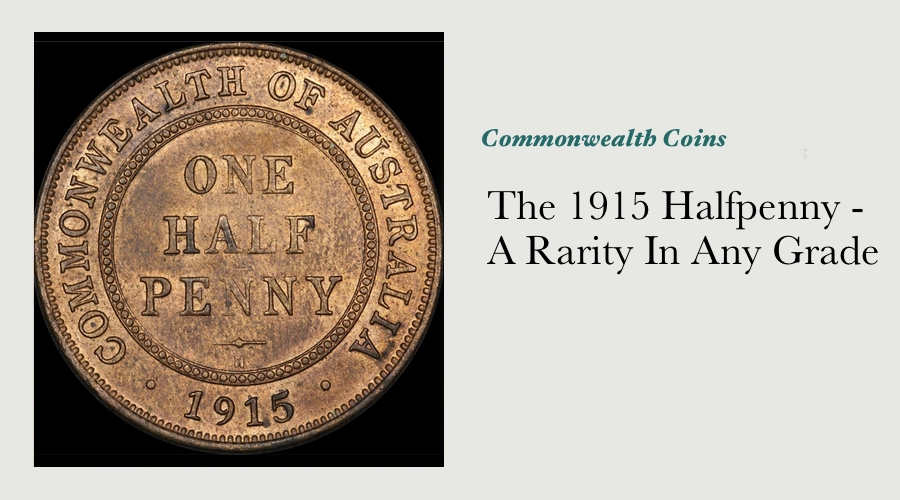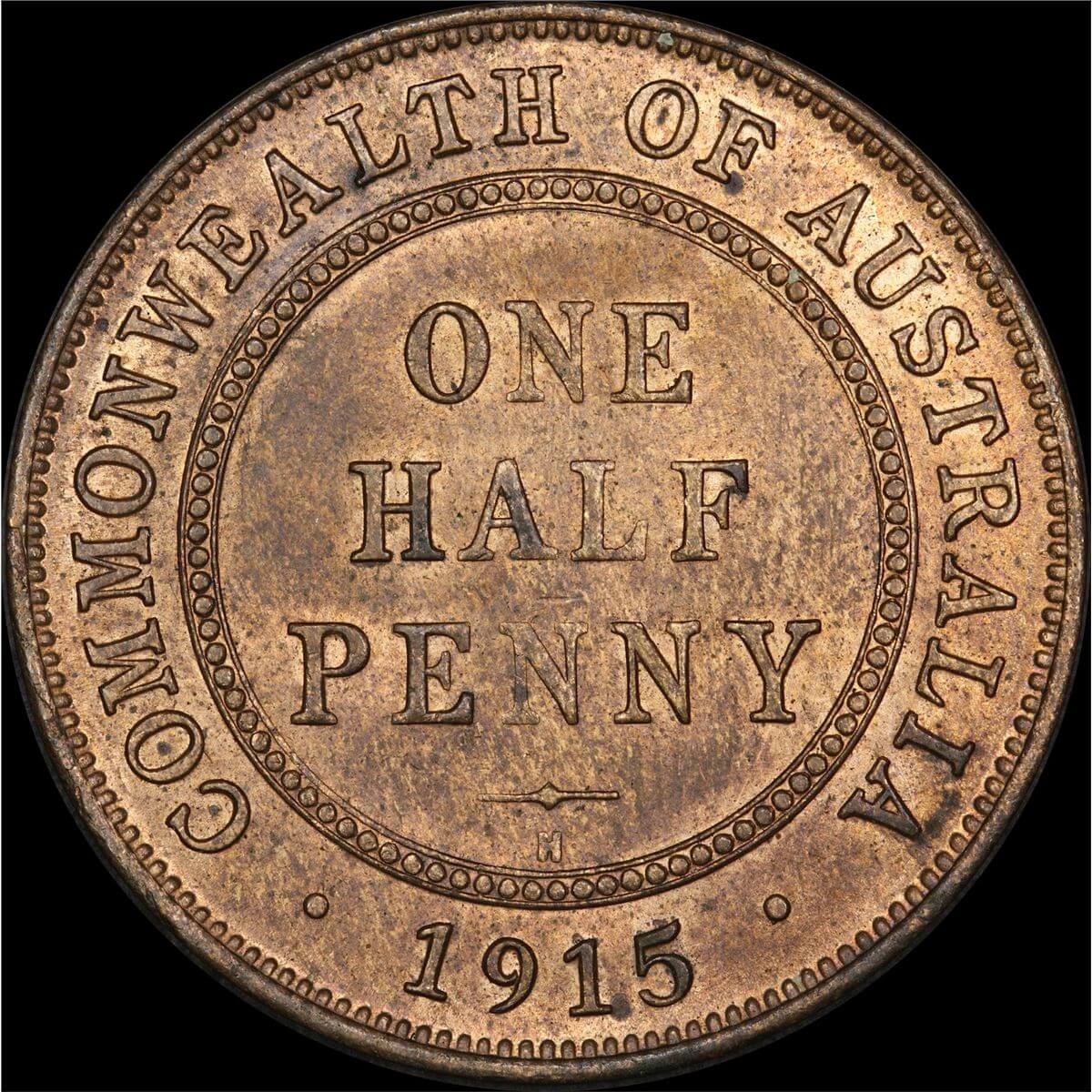The 1915 Halfpenny - A Rarity In Any Grade

When our national silver coinage was introduced in Australia in 1910, the new Commonwealth Government attempted to produce enough coins to satisfy the national economy for several years. For this reason, the mintage figures for the years immediately following 1910 were comparatively low.
The outset of World War I had a further impact on the production figures of Australian coinage, and also on the way in which they were produced.
The Royal Mint in London had already been swamped with work in striking coins for all of the colonies in the British Empire, and had been delegating some of the work in striking colonial "token" coinage to the Heaton Mint at Birmingham.
In addition to this work, the Heaton Mint was also producing significant quantities of copper strip and tubing for the British government's munition works.

Due to the reduced economic demand for coinage in Australia following the onset of WWI, the number of halfpennies the Heaton Mint was required to strike for Australia in 1915 was markedly reduced to just 720,000 coins - one of the lowest halfpenny mintages in the entire pre-decimal series.
Although the 1915 halfpenny does not have the lowest mintage out of all of the halfpennies produced, it is certainly the second rarest halfpenny behind the 1923.
This rarity would indicate that the majority of the 1915 halfpennies struck remained in circulation for an extended period of time, indeed any date collector of halfpennies will readily attest that this coin is incredibly difficult to obain in superior grade. Which makes for an interesting question - just what is superior grade for this coin?
My own research into the frequency of this coin beign sighted at auction in the past few decades leads me to believe that if a collector is able to obtain a 1915 halfpenny in any better than about VF condition, they'll have themselves a coin that is better than most that remain in existence.
This might seem a crazy notion for those collectors that are only interested in obtaining coins that are in perfect mint state, however although 1915 halfpennies have been sighted in full, blazing mint state condition, they certainly are far and few between.
I have sighted certainly less than 10 mint state examples at auction since 1994 - that rarity puts a mint state 1915 halfpenny on a par with say a 1923 halfpenny in EF condition, and nearly on a par with a 1925 penny in about Unc.
The current PCGS population report confirms that - as of April 2016, they have graded just 20 examples of this coin in mint state.
Challenging Production Conditions
The production conditions at the Heaton Mint during 1915 must have been trying if the technical characteristics of the 1915 halfpenny are any guide.
Many novice collectors often mistake weakness in either the centre of the reverse or in the base of the crown of the King as wear, when often this weakness is more an unfortunate characteristic of the depth to which the coins were struck.
It is not unusual at all to see even a mint state 1915 halfpenny to have weak lettering across the centre of the reverse, or for their to be minimal detail in say the pearls in the base of the King's crown.
The Heaton Mint staff clearly had difficulty in setting the die pressure to be even across both sides without actually destroying the dies. I don't recall seeing huge numbers of 1915 halfpennies with die cracks on them, however we can only presume that the die pressure was eased back in order to extend the life of the dies.
The 1915 halfpenny for mine is a coin that not only captures the history of Australia's involvement in World War I, it also is something to behold when seen in mint state. It boggles the mind to think just how a halfpenny can stay in mint condition for over a century, through two World Wars and a Depression!